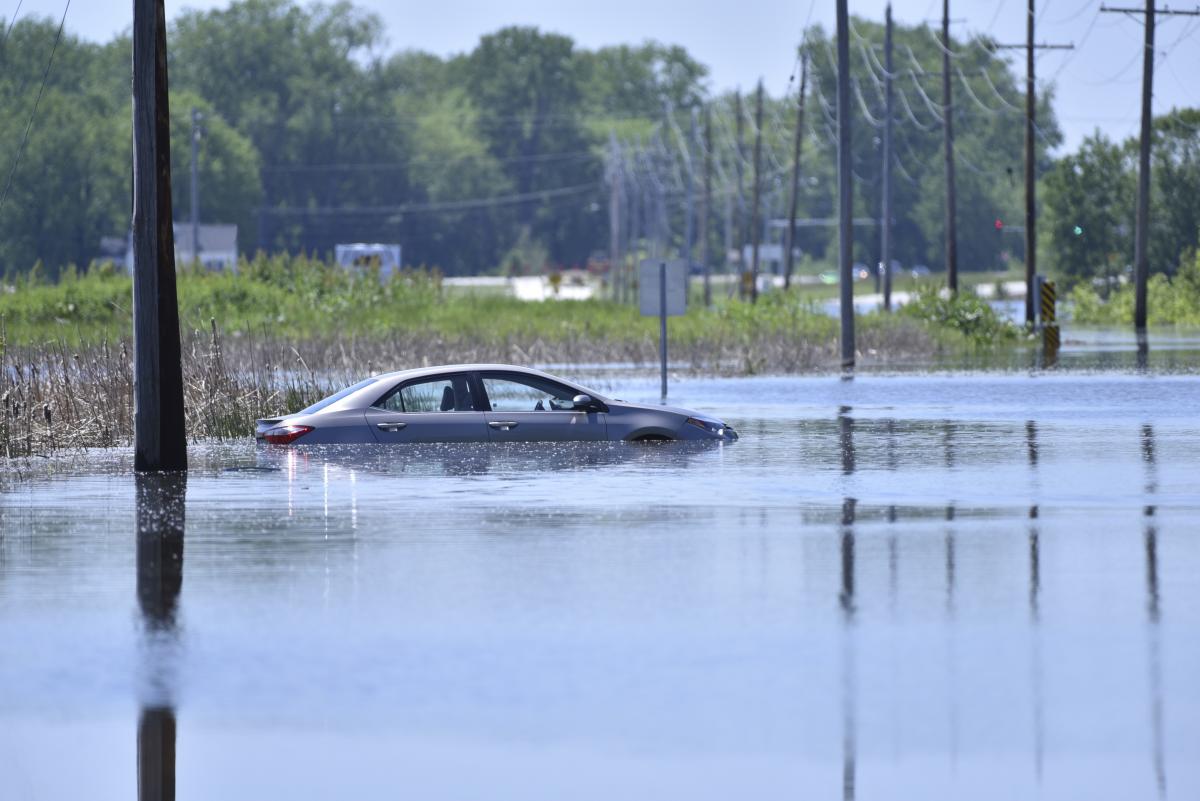Flood Awareness: How To Be Prepared
 Flooding is a temporary overflow of water onto land that is normally dry. In terms of number of lives lost and property damage, flooding is the most common natural disaster in the United States. Floods can occur at any time of the year, in any part of the country and at any time of the day or night.
Flooding is a temporary overflow of water onto land that is normally dry. In terms of number of lives lost and property damage, flooding is the most common natural disaster in the United States. Floods can occur at any time of the year, in any part of the country and at any time of the day or night.
Understanding your risk and having a plan of action in the event of a flood can help you protect yourself, your loved ones, and your home.
Review our flood safety tips and resources below, which were compiled from the National Weather Service, American Red Cross, Center for Disease Control and Prevention, Federal Emergency Management Agency and Department of Homeland Security.
Before a flood
- Understand your risk. Remember, flooding can occur anywhere, but it is particularly important to be prepared for flooding if you live in a low-lying area near a body of water, such as near a river, stream or culvert; along a coast; or downstream from a dam or levee. Find out if you are located in a floodplain, which is considered a Special Flood Hazard Area.
- Most home insurance policies do not cover flood damages. Consider purchasing flood insurance. Check with your city or county government (start with the Building or Planning Department) to review the Flood Insurance Rate Maps, published by the Federal Emergency Management Agency (FEMA).
- Familiarize yourself with local emergency plans. Know where to go and how to get there in the event of a flood.
- Stay tuned in to local weather updates and emergency instructions through your phone, television, radio or computer.
- Build or restock an emergency preparedness kit.
- Protect your belongings against flood damages by bringing outdoor furniture inside and moving important items to the highest possible floor.
- Disconnect electrical appliances. If instructed, turn off your gas and electricity at the main switch or valve.
- Account for companion animals by bringing them indoors, if possible. Move large animals and livestock to higher ground or consider precautionary evacuation.
During a flood
- Move quickly to higher ground or the highest level of your home.
- Evacuate if directed and do so immediately.
- Stay tuned in to local weather updates and emergency instructions through your phone, television, radio, or computer.
- Avoid areas of localized flooding, such as underpasses, dips, low spots, canyons, etc.
- Do not attempt to walk or drive through floodwaters. Remember — turn around don’t drown! As little as six inches of water can knock you down, and only a foot of water can cause you to lose control of your vehicle.
- Be aware of the risk of electrocution. Do not go into any room if water covers the electrical outlets or if cords are submerged.
- Avoid contact with floodwater, which may be contaminated with sewage or contain dangerous insects or animals.
After a flood
- Return home only when authorities say it is safe to do so.
- Photograph damage to your property for insurance purposes.
- Listen to a water advisory from local authorities to find out if your water is safe. Use only bottled, boiled or treated water for drinking, bathing and food preparation until authorities tell you that your water supply is safe.
- Wear gloves and boots to clean and disinfect.
- Prevent mold by removing wet contents immediately. Remove and throw out drywall and insulation that was contaminated with flood water or sewage. Walls, hard-surfaced floors and many other household surfaces should be cleaned with soap and water and disinfected with a solution of one cup of bleach to five gallons of water. Throw out items that cannot be washed and cleaned with a bleach solution, such as mattresses, pillows, carpeting, carpet padding and stuffed toys.

